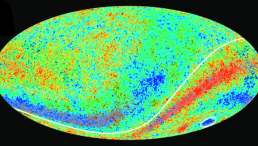Restless Arm Syndrome (RAS), a central nervous system issue, leads to abnormal arm movements and sensations. It involves strange arm sensations, involuntary arm jerks, and disrupted sleep. It also affects arms, elbows, and hands, resembling restless leg syndrome. This overview discusses its causes, symptoms, diagnosis, treatment, and prognosis.

Restless Arm Syndrome: Understanding Its Causes, Symptoms, and Effective Management Strategies
Causes and Potential Triggers
Although RAS often lacks a definite cause, some potential factors include genetic predisposition, where over 50% of cases exhibit a familial link with a 50% chance of inheritance.
More so, a disrupted balance of the neurotransmitter dopamine, which is responsible for movement coordination, could lead to muscle spasms and involuntary arm movement.
Furthermore, underlying health conditions such as Parkinson's Disease, chronic kidney disease, vitamin B12 deficiency, and fibromyalgia are linked to restless arm syndrome. Iron deficiency anemia, resulting in low red blood cell and iron levels, could also contribute to decreased dopamine levels.
Pregnancy can also trigger symptoms, affecting about 40% of pregnant women, even in their arms during the third trimester, although the cause remains unknown; these symptoms often resolve shortly after childbirth.
Triggers, while not the direct causes, can exacerbate restless arm syndrome symptoms. Common triggers encompass medications like anti-depressants, antihistamines, antipsychotics, and calcium channel blockers, along with caffeine consumption from drinks like tea, coffee, or cola. Inadequate exercise or excessive stress and anxiety can also serve as triggers for restless arm syndrome episodes.
READ ALSO: Marijuana Chewing Gum is Said to Relieve Fibromyalgia Pain
Symptoms
RAS is a variation of restless legs syndrome (RLS) that affects the upper limbs. RLS, alternatively termed Willis-Ekbom disease, is a common neurological condition marked by an uncontrollable urge to move the lower limbs, accompanied by discomfort that intensifies at rest and during the evening, and is alleviated by movement.
Individuals commonly report experiencing unusual sensations in their arms, including sensations of crawling and tingling, involuntary jerky arm movements, an urge to move their arms, and disrupted sleep. These symptoms can be confined to the arms or may extend to other parts of the body.
Management
Restless arm syndrome treatment encompasses various strategies to mitigate symptoms' impact on sleep and daily life. Dopaminergic medications are commonly prescribed to enhance dopamine levels, while caution is advised with their prolonged use.
Supplements like iron, magnesium, and folate can help if levels are low, and maintaining a regular sleep pattern with relaxation routines aids symptom alleviation.
Intake management involving reduced caffeine, alcohol, and tobacco intake after 6:00 p.m. is beneficial, alongside moderate exercise, movement, massage, and addressing underlying health conditions.
Alternating hot and cold therapy, as well as soothing baths or showers, offers potential relief, contributing to a holistic approach in managing restless arm syndrome.
For individuals with restless legs or arms, home remedies can provide relief, but persistent or severe symptoms warrant a doctor's consultation to address potential underlying causes. Medical evaluation aids in identifying the condition's origin, and treatment typically aims to alleviate symptoms effectively.
RELATED ARTICLE: Incidence of Parkinson's Disease in the US is 50% Higher Than Thought
Check out more news and information on Medicine and Health in Science Times.
![Apple Is Developing Homegrown Chips to Run AI Tools in Data Centers [Report]](https://1721181113.rsc.cdn77.org/data/thumbs/full/53497/89/56/50/40/apple-is-developing-homegrown-chips-to-run-ai-tools-in-data-centers-report.jpeg)



![Colorado River Toad Releases Psychedelic Compounds That Could Treat Depression, Anxiety [Study]](https://1721181113.rsc.cdn77.org/data/thumbs/full/53533/89/56/50/40/colorado-river-toad-releases-psychedelic-compounds-that-could-treat-depression-anxiety-study.jpeg)








![China's Chang'e 6 Moon Mission Appears to Include an Undisclosed Mini Rover [See Photos]](https://1721181113.rsc.cdn77.org/data/thumbs/full/53548/258/146/50/40/chinas-change-6-moon-mission-appears-to-include-an-undisclosed-mini-rover-see-photos.jpeg)
